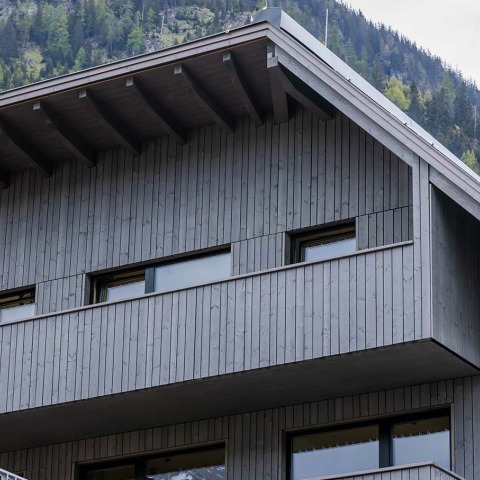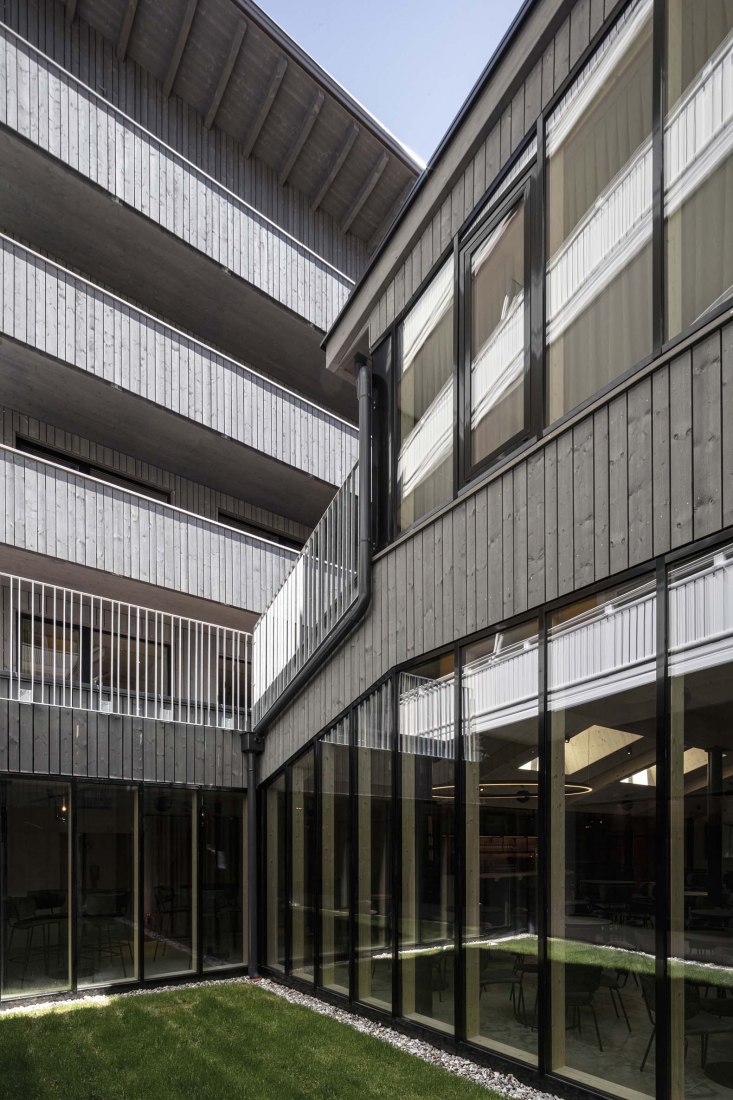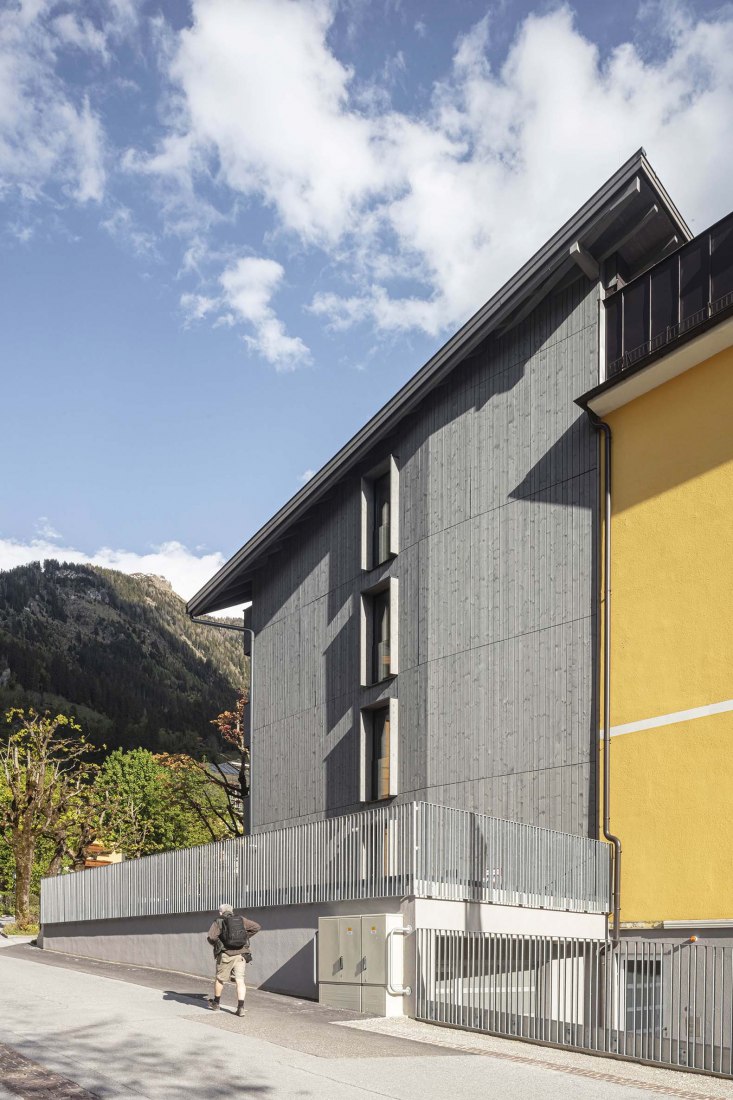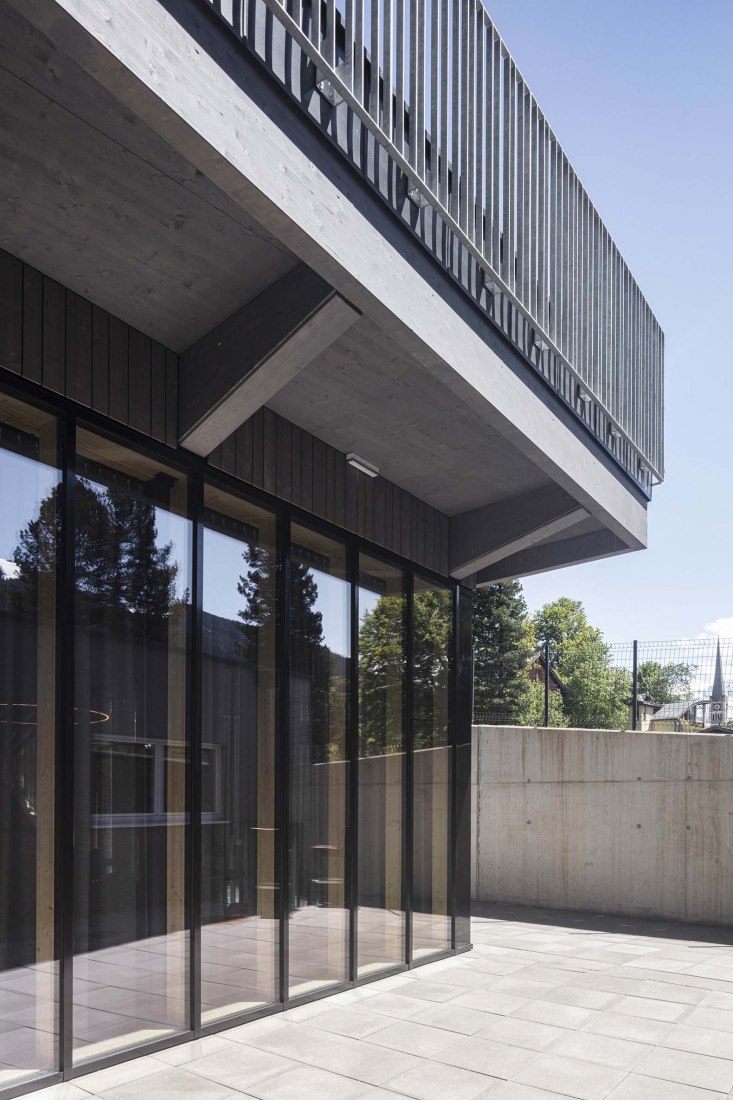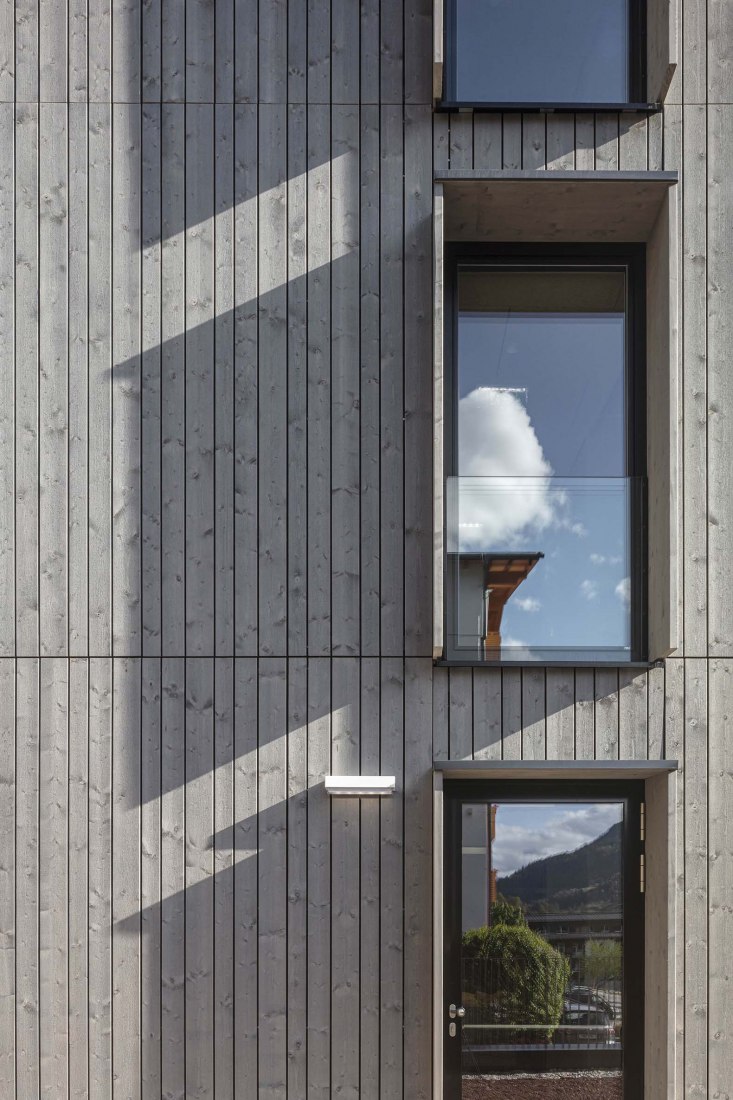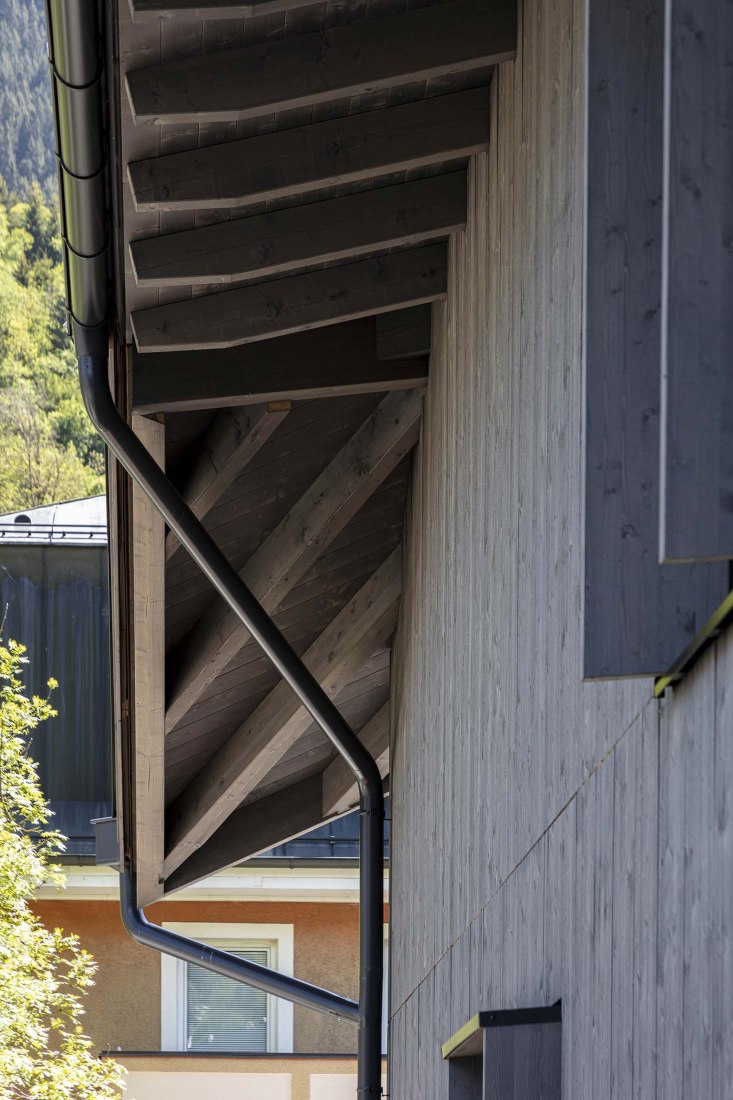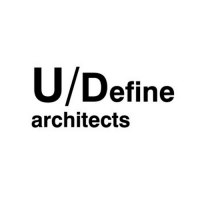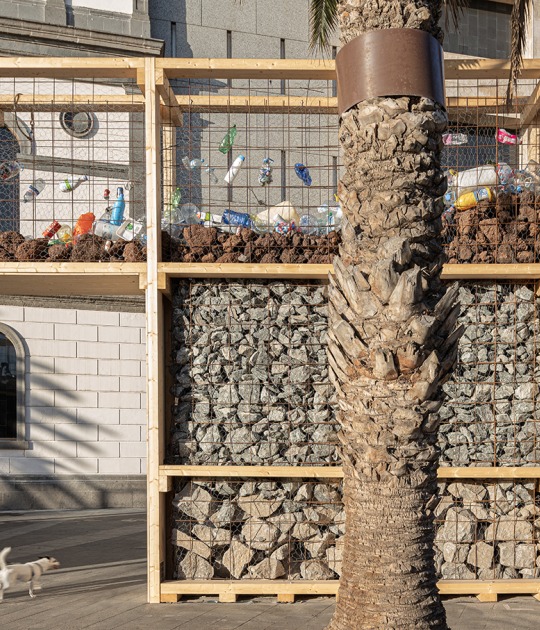The project has been carried out with simple, efficient solutions, with robust materials, and flexible in terms of its long-term use, facilitating its maintenance and sustainability with a minimum environmental impact.
Description of project by U / Define
INFORMATIVE DESIGN
To expand the hotel's guest capacity by 76 new rooms, a new hotel wing was built. The additional beds required a proportionate enlargement of the restaurant and the construction of a new multifunctional space and additional activity rooms to accommodate the specific entertainment programs of the client.
The additional program required an almost complete occupation of the available terrain. All new components were described and analysed with their own conditions to inform the design.
A hotel functions by the internal organisation of the building. The connection between the various public, semi-public, private spaces and the proximity of the supporting functions requires an efficient layout.
The interior of the existing hotel flows seamlessly into the new building. To restore the balance of the building complex between the existing and the new, the heart of the hotel was repositioned from the main street to the new inner courtyard between the two wings. It forms an important pivotal point in the project: the new multifunctional space located here has direct connections to the new lobby, the renovated restaurant and the new activity areas. By repositioning the main entrance of the hotel, it sits more central and prominent within its surrounding.
CULTURAL CONTEXT
The architecture of the new wing was designed by architecture studio U/Define as a reinterpretation of typical Austrian chalet architecture.
The local typologies of Bad Hofgastein were examined for spatial characteristics and materiality. The building responds to the local context but radiates unity through its simplicity in use of materials.
In an environment where reinforced concrete is used as the primary building material, the use of Austria's main export product in building materials, cross-laminated timber (CLT), as a structural material and as an interior finish was applied in the project. The interior is given a healthy, serene and warm appearance with the visible wood.
The fast implementation due to the prefabricated modules limits the nuisance for local residents and holidaymakers to a minimum. The new building stands out in the contrast between old and new, but blends in with the surrounding mountains.
CONSTRUCTION
By using locally produced cross-timber in prefabricated solid wood modules, the new wing could be constructed very quickly, despite the, sometimes, extreme weather conditions.
The lightness and strength of CLT wood gives it an extremely manageable and robust character compared to other materials.
DURABILITY
Design for disassembly, flexibility and for longevity were the approaches for this project.
This project did not require high-tech, but sober and simple solutions. Solutions that remain adaptable and maintenance-friendly in the long run.
The materials used in the project are as pure as possible in their composition as well as robust, renewable and easy to process and use.
The positive CO2 balance in relation to other materials, such as metal or concrete, means that if wood is used as a full-fledged building material, two tonnes of CO2 are recovered from the atmosphere for every m3 of wood used!
By using wood as a primary building material, this hotel takes 2,628 tonnes of CO2 out of the atmosphere compared to traditional building materials.
For the hotel sector, where sustainability is not at the top of the agenda, this is a leading step towards a more climate-conscious sector.
